It looks like you're using an Ad Blocker.
Please white-list or disable AboveTopSecret.com in your ad-blocking tool.
Thank you.
Some features of ATS will be disabled while you continue to use an ad-blocker.
8
share:
From the book A History Of Secret Sociaties by Arkon Darul.
The earliest mentions of the witches sabbats;which were also known as "synagogues" came in the eleventh century,and seem to show the assimilation of the Diana cult with another: one which involves the worship of a "black man".
then we have mentions of brewing of potions,rubbing on oinyments,meetings and spells at cross-roads,renouncing christianity and the use of the wax image in a death-spell.
by the fifteenth century,there was a remarkable similarity between witch meeting reported or confessed to,in many countries,some without much contact with one another.
reference will be made later to the "sabbat" rituals reported from sweden,spain,scotland and france. from the 7th~15th centuries the moors were ruling spain and north africa. cultral penetration from their universities into western europe was enormous;
while their transltions of greek and other philosophical books posed a challenge which the theologians of the west were hard to meet during this very same period, a strange cult had arisen in morocco,crossed the strits into andaluisa, and wasactively-if secretly-followed in the centres of arab civilization with cosmopolitan populations. the latter consisted of arabized jews,christians scholors and wandering ascetics who travelled from one country to another in search of knowlage. the cult was called by the arab authorities[who tried to put it down] "the double horned", and it seemed to be connected moon-worship.
it was certainly associated with magic, and its similarities to what were later reported as witch practises are very close. the devotees of this cult met on thursday nights,were initiated by having a wound inflicted somewhere on their bodies[which left a smallscar],and beleived that they could raise magical power by dancing in or around a circle. some of them claim that they at times carried out religious services which involved the saying of the moslem prayers backwards,and invoking el aswad(the black man)to help them. they served their priests, whom they saw only rarely, says the historian ibn jafar,after taking an oath of fealty of body and soul,they were drawn from all sections of the community, were of both sexes, and used ritual knives in the scarring ceremony. these knives were known as al-dhamme' or bloodletters.
here is a typical initiation ceremony of the horned ones:we gathered by night, where two paths met and crossed; and he who had been so instructed bore with him a cock, which was to be sacrificed as the emblem of the new day. each carried a staff with two horns in brass upon the head; which is symbolical of the goat which is ridden,the sign of power and irresistiblity. "this meeting which is called the zabbat,the forceful or powerful one; and the circle of companions are the kafan(arabic for winding sheet).
We were thus termed, because each man wears over his naked flesh during the ritual only the white plain sheet in which he will be buried. "i was given the sanctity that night, and to join with the band of the elect who would spread joy throughout the world.
those of us who are companions of the rabbna(our lord) examplified by the blacksmith". in morocco to this day, blacksmiths are considered to be great sorcerers; and in the middle east in general(as well as in the arabian nights)it is the moor who is always the magician.
However, we find that amoung the blue eyed berbers of the moroccan atlas, a similar type of cermonry is still in exant.ABDELMALIK HAROUNI,in his MUAJIZAT- IFRIQUIA wonders of africa, writing a thousand years later in constantinople, speaks of the berber sect of the horned ones, who lights fires and dance around them, each member carries a staff called the goat which he throws away during the ecstacy of the ritual dance.
now here comes the european connection;it seams quite possible that medieval european witch craft was amixture of two hornism, and various folk belief from pre-christian times.
in 1324,the trail of lady Kyteler in ireland brought allegations that she was a witch; that she sacrificed a red cock to one, who was called an Ethiopian; the use of the name ROBIN and ROBINET; and variations is more than once found in European witch craft cases, the apperance of the blackman is not uncommon. was there a connection between moors and western europe as early this? most decidedly so' and much earlier, Anglo-Saxon coins imitating Arab dinars of A.D.774 were struck by king Offa. with the there is only one god Allah and Mohammad is his messenger, the originals were minted by the caliph who ruled Spain. Lady Kyteler sacrificed to one robbin the above should say.
Below is my opinion not taken from the book:
Maybe the religious reformation/jihaad carried out by the Alomravids at the closing of the Ghanaian empire,had at lot do with the above,imagine a fifth coloum of African non-islamic religious ideas permeating the Islmaic empire like a virus affecting even potential heathen Christian converters.

he Goat of Mendes Or Banebdjedet
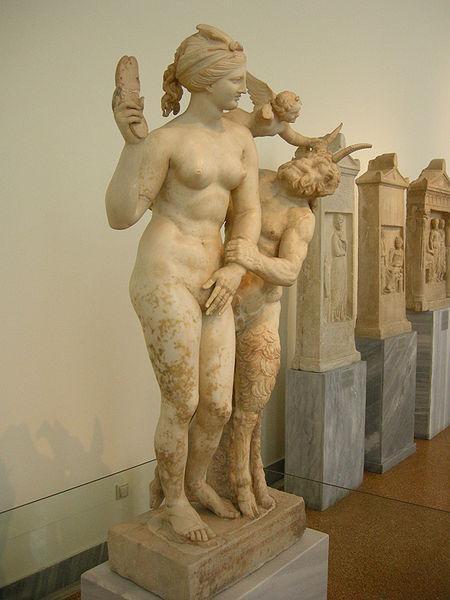
Pan
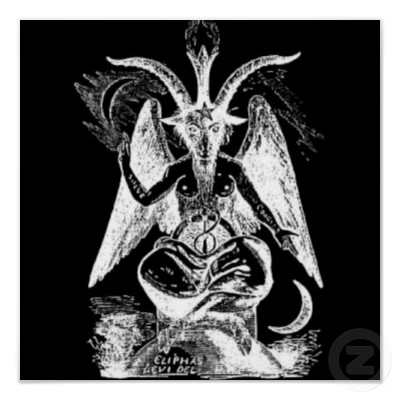
Modern Bahomptmet
I believe the goat mentioned above is non other than the goat of Mendes reintroduced by Africans who never let go of the old religion here is what Herodotus and Diodorus had to say on the matter.
Banebdjedet
also Banebdjet, Banebdjed etc
A fertility god, the "Ba of the Lord of Mendes" was originally a ram with horns shaped like cork-screws, later he was often thought of as a billy-goat. He was the ba of Re, Shu, Geb and Osiris. He replaced the fish goddess Hatmehit as the main deity of Mendes. Later she became his consort and together they were parents to Harpocrates of Mendes.
According to Herodotus his devotees did not sacrifice goats:
[2.42.1] Those, on the contrary, who possess a temple dedicated to Mendes, or belong to the Mendesian canton, abstain from offering goats, and sacrifice sheep instead.
[2.46.1] I mentioned above that some of the Egyptians abstain from sacrificing goats, either male or female. The reason is the following:- These Egyptians, who are the Mendesians, consider Pan to be one of the eight gods who existed before the twelve, and Pan is represented in Egypt by the painters and the sculptors, just as he is in Greece, with the face and legs of a goat. They do not, however, believe this to be his shape, or consider him in any respect unlike the other gods; but they represent him thus for a reason which I prefer not to relate. The Mendesians hold all goats in veneration, but the male more than the female, giving the goatherds of the males especial honour. One is venerated more highly than all the rest, and when he dies there is a great mourning throughout all the Mendesian canton. In Egyptian, the goat and Pan are both called Mendes.
www.reshafim.org.il...
The earliest mentions of the witches sabbats;which were also known as "synagogues" came in the eleventh century,and seem to show the assimilation of the Diana cult with another: one which involves the worship of a "black man".
then we have mentions of brewing of potions,rubbing on oinyments,meetings and spells at cross-roads,renouncing christianity and the use of the wax image in a death-spell.
by the fifteenth century,there was a remarkable similarity between witch meeting reported or confessed to,in many countries,some without much contact with one another.
reference will be made later to the "sabbat" rituals reported from sweden,spain,scotland and france. from the 7th~15th centuries the moors were ruling spain and north africa. cultral penetration from their universities into western europe was enormous;
while their transltions of greek and other philosophical books posed a challenge which the theologians of the west were hard to meet during this very same period, a strange cult had arisen in morocco,crossed the strits into andaluisa, and wasactively-if secretly-followed in the centres of arab civilization with cosmopolitan populations. the latter consisted of arabized jews,christians scholors and wandering ascetics who travelled from one country to another in search of knowlage. the cult was called by the arab authorities[who tried to put it down] "the double horned", and it seemed to be connected moon-worship.
it was certainly associated with magic, and its similarities to what were later reported as witch practises are very close. the devotees of this cult met on thursday nights,were initiated by having a wound inflicted somewhere on their bodies[which left a smallscar],and beleived that they could raise magical power by dancing in or around a circle. some of them claim that they at times carried out religious services which involved the saying of the moslem prayers backwards,and invoking el aswad(the black man)to help them. they served their priests, whom they saw only rarely, says the historian ibn jafar,after taking an oath of fealty of body and soul,they were drawn from all sections of the community, were of both sexes, and used ritual knives in the scarring ceremony. these knives were known as al-dhamme' or bloodletters.
here is a typical initiation ceremony of the horned ones:we gathered by night, where two paths met and crossed; and he who had been so instructed bore with him a cock, which was to be sacrificed as the emblem of the new day. each carried a staff with two horns in brass upon the head; which is symbolical of the goat which is ridden,the sign of power and irresistiblity. "this meeting which is called the zabbat,the forceful or powerful one; and the circle of companions are the kafan(arabic for winding sheet).
We were thus termed, because each man wears over his naked flesh during the ritual only the white plain sheet in which he will be buried. "i was given the sanctity that night, and to join with the band of the elect who would spread joy throughout the world.
those of us who are companions of the rabbna(our lord) examplified by the blacksmith". in morocco to this day, blacksmiths are considered to be great sorcerers; and in the middle east in general(as well as in the arabian nights)it is the moor who is always the magician.
However, we find that amoung the blue eyed berbers of the moroccan atlas, a similar type of cermonry is still in exant.ABDELMALIK HAROUNI,in his MUAJIZAT- IFRIQUIA wonders of africa, writing a thousand years later in constantinople, speaks of the berber sect of the horned ones, who lights fires and dance around them, each member carries a staff called the goat which he throws away during the ecstacy of the ritual dance.
now here comes the european connection;it seams quite possible that medieval european witch craft was amixture of two hornism, and various folk belief from pre-christian times.
in 1324,the trail of lady Kyteler in ireland brought allegations that she was a witch; that she sacrificed a red cock to one, who was called an Ethiopian; the use of the name ROBIN and ROBINET; and variations is more than once found in European witch craft cases, the apperance of the blackman is not uncommon. was there a connection between moors and western europe as early this? most decidedly so' and much earlier, Anglo-Saxon coins imitating Arab dinars of A.D.774 were struck by king Offa. with the there is only one god Allah and Mohammad is his messenger, the originals were minted by the caliph who ruled Spain. Lady Kyteler sacrificed to one robbin the above should say.
Below is my opinion not taken from the book:
Maybe the religious reformation/jihaad carried out by the Alomravids at the closing of the Ghanaian empire,had at lot do with the above,imagine a fifth coloum of African non-islamic religious ideas permeating the Islmaic empire like a virus affecting even potential heathen Christian converters.

he Goat of Mendes Or Banebdjedet

Pan

Modern Bahomptmet
I believe the goat mentioned above is non other than the goat of Mendes reintroduced by Africans who never let go of the old religion here is what Herodotus and Diodorus had to say on the matter.
Banebdjedet
also Banebdjet, Banebdjed etc
A fertility god, the "Ba of the Lord of Mendes" was originally a ram with horns shaped like cork-screws, later he was often thought of as a billy-goat. He was the ba of Re, Shu, Geb and Osiris. He replaced the fish goddess Hatmehit as the main deity of Mendes. Later she became his consort and together they were parents to Harpocrates of Mendes.
According to Herodotus his devotees did not sacrifice goats:
[2.42.1] Those, on the contrary, who possess a temple dedicated to Mendes, or belong to the Mendesian canton, abstain from offering goats, and sacrifice sheep instead.
[2.46.1] I mentioned above that some of the Egyptians abstain from sacrificing goats, either male or female. The reason is the following:- These Egyptians, who are the Mendesians, consider Pan to be one of the eight gods who existed before the twelve, and Pan is represented in Egypt by the painters and the sculptors, just as he is in Greece, with the face and legs of a goat. They do not, however, believe this to be his shape, or consider him in any respect unlike the other gods; but they represent him thus for a reason which I prefer not to relate. The Mendesians hold all goats in veneration, but the male more than the female, giving the goatherds of the males especial honour. One is venerated more highly than all the rest, and when he dies there is a great mourning throughout all the Mendesian canton. In Egyptian, the goat and Pan are both called Mendes.
www.reshafim.org.il...
edit on 1-3-2013 by Spider879 because: (no reason given)
"Zar, in the sense of possession, is usually, though not exclusively, inherited. It is also contagious and may strike at any time. Diriye Abdullahi, a
native of Somalia, says that the zar is basically a dance of spirits, or a religious dance - kind of leftover from the old African deities, a variant
of what we describe in the west as "voodoo". The old African deities were headed by two figures; Azuzar (the male, assoc. with Osiris) and Ausitu (the
female, known in the west as Isis). Ausitu (or Aysitu in Somalia) is still celebrated and given offerings by pregnant women so that she will provide
them with a safe birth. He describes it as a ritual dance which is mostly observed by women, especially older women. This corresponds to the practice
of older African religions, in which older women were the priestesses. He maintains that younger women, especially unmarried women, are not generally
thought to be "worthy of a visit by the spirit of Zar, who chooses domicile or residence in the person who is his choice."
Traditionally, women are carriers of the Zar tradition. A Zar is a spirit. Some Ethiopians and Yemenis have their own Zar, like a guide of guardian angel. The dance ritual, Zar, like other traditional healing ceremonies, as for instance practiced by the !Kung of Southern Africa, is done to regain a sense of balance and harmony in one's life and in tandem with the community.
The word Zar is thought by some to be a corruption of Jar which in the Cu#ic language of the Agaw people is the word for Waaq the sky god. The Rastafarians call god Jah.
And Yah is a very old Ancient Egyptian word for God.
And this is from wiki
Varieties of Zār cults in Sudan
Zār or Zaar (Arabic/Persian: زار) is a religious custom, apparently originating in central Ethiopia during the 18th century, later spreading throughout East and North Africa.[1] Zār custom involves the possession of an individual (usually female) by a spirit. It is also practiced in Egypt, Sudan, southern Iran[2] and elsewhere in the Middle East.
Zar Ritual Egypt
Zar ritual from Ethiopia,MorrocoEgypt and Iran
Mind you this is not always viewed in positive terms by Abrahamic religions as the up-loader of the second vid labeled it as Satanic,in the same manner many Christians in the West labeled the West African version called Vudun as satanic.
Pls klik the vids above.
A featured musical instrument in the Zār ritual is the tanbura, a six-string lyre (6-stringed "bowl-lyre"[3]), which, like the Zār practice itself, exists in various forms in an area stretching from East Africa to the Arabian Peninsula.[4] Other instruments include the mangour, a leather belt sewn with many goat hooves, and various percussion instruments.
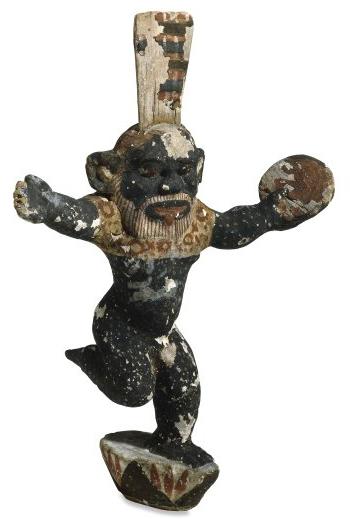
God Bes
The Zār cult served as a refuge for women and effeminate men in conservative, Muslim-dominated Sudan.
In Ethiopia, zār also refers to malevolent spirits.Many Ethiopian Christians and Muslims:199 believe in these spirits. Among both groups, mental illness is often attributed to zār possession. In Ethiopia, zār possession is more common among women, while among immigrants in the West, men are more commonly afflicted. At the same time, many Ethiopians believe in benevolent, protective spirits, or abdar. While this belief in abdar and zār fits the traditional dualism of good and evil, it is also deeply rooted in superstition
Among extant varieties of Zār cults are "zār Sawāknī (the zār from the area of Sawākin ["Dalūka, that is, zār Sawāknī) and zār Nyamānyam [cf. /NYAMe/ ('Friend'), god of the Akan] (the zār of the Azande)" : "the Nyam-Nyam have zār nugāra, with Babīnga and Nakūrma." "Babīnga and Nakūrma ... are recognized as Azande ancestral spirits." Nugāra (big drum) = "nuqara ... of the Dega tribe ... was originally from Wau." (Wau is in Equatoria province of Sudan.) "Besides the nugāra of the Azande, other zār cults mentioned were those of the Fartīt [Fartīt peoples include "the Karra, Gula, Feroge, and Surro", the Shilluk, and the Dinka peoples and the dinia Nuba cult.
en.wikipedia.org...
A further interesting note is the old religions weather in Europe West Asia or some areas in Africa the women plays a prominent role example in the Wicca religion of the West it is mostly women who are participants, as for demonizing the old religions yes that's a common practice in Abrahamic religions how ever the practice may have started with the Kemities themselves as Seth was not always seen as a negative all the time but fell out of favor ,especially when a people from the Levant called the Hyksos elevated his status after conquering lower Kemet,most things associated with him became evil by the Amun priesthood,but before that he was kinda like the trickster God Eshu Elebra straddling chaos and Order. Seth some said is etymologically linked to Satan hence the color red sometimes associated with Satan along with the goat.
Traditionally, women are carriers of the Zar tradition. A Zar is a spirit. Some Ethiopians and Yemenis have their own Zar, like a guide of guardian angel. The dance ritual, Zar, like other traditional healing ceremonies, as for instance practiced by the !Kung of Southern Africa, is done to regain a sense of balance and harmony in one's life and in tandem with the community.
The word Zar is thought by some to be a corruption of Jar which in the Cu#ic language of the Agaw people is the word for Waaq the sky god. The Rastafarians call god Jah.
And Yah is a very old Ancient Egyptian word for God.
And this is from wiki
Varieties of Zār cults in Sudan
Zār or Zaar (Arabic/Persian: زار) is a religious custom, apparently originating in central Ethiopia during the 18th century, later spreading throughout East and North Africa.[1] Zār custom involves the possession of an individual (usually female) by a spirit. It is also practiced in Egypt, Sudan, southern Iran[2] and elsewhere in the Middle East.
Zar Ritual Egypt
Zar ritual from Ethiopia,MorrocoEgypt and Iran
Mind you this is not always viewed in positive terms by Abrahamic religions as the up-loader of the second vid labeled it as Satanic,in the same manner many Christians in the West labeled the West African version called Vudun as satanic.
Pls klik the vids above.
A featured musical instrument in the Zār ritual is the tanbura, a six-string lyre (6-stringed "bowl-lyre"[3]), which, like the Zār practice itself, exists in various forms in an area stretching from East Africa to the Arabian Peninsula.[4] Other instruments include the mangour, a leather belt sewn with many goat hooves, and various percussion instruments.

God Bes
The Zār cult served as a refuge for women and effeminate men in conservative, Muslim-dominated Sudan.
In Ethiopia, zār also refers to malevolent spirits.Many Ethiopian Christians and Muslims:199 believe in these spirits. Among both groups, mental illness is often attributed to zār possession. In Ethiopia, zār possession is more common among women, while among immigrants in the West, men are more commonly afflicted. At the same time, many Ethiopians believe in benevolent, protective spirits, or abdar. While this belief in abdar and zār fits the traditional dualism of good and evil, it is also deeply rooted in superstition
Among extant varieties of Zār cults are "zār Sawāknī (the zār from the area of Sawākin ["Dalūka, that is, zār Sawāknī) and zār Nyamānyam [cf. /NYAMe/ ('Friend'), god of the Akan] (the zār of the Azande)" : "the Nyam-Nyam have zār nugāra, with Babīnga and Nakūrma." "Babīnga and Nakūrma ... are recognized as Azande ancestral spirits." Nugāra (big drum) = "nuqara ... of the Dega tribe ... was originally from Wau." (Wau is in Equatoria province of Sudan.) "Besides the nugāra of the Azande, other zār cults mentioned were those of the Fartīt [Fartīt peoples include "the Karra, Gula, Feroge, and Surro", the Shilluk, and the Dinka peoples and the dinia Nuba cult.
en.wikipedia.org...
A further interesting note is the old religions weather in Europe West Asia or some areas in Africa the women plays a prominent role example in the Wicca religion of the West it is mostly women who are participants, as for demonizing the old religions yes that's a common practice in Abrahamic religions how ever the practice may have started with the Kemities themselves as Seth was not always seen as a negative all the time but fell out of favor ,especially when a people from the Levant called the Hyksos elevated his status after conquering lower Kemet,most things associated with him became evil by the Amun priesthood,but before that he was kinda like the trickster God Eshu Elebra straddling chaos and Order. Seth some said is etymologically linked to Satan hence the color red sometimes associated with Satan along with the goat.
edit on 3-3-2013 by Spider879 because: Error
That was very informative. I've studied many variant 'spiritual' approaches and came across an autohor who claimed to be a part of a coven. It was
later discovered that he took a hodge podge of other practices and thus Wicca was born.
Do you find that most of the older practices stem from something earlier?
Since it is known that Sumerians are the oldest known civilization and practiced a base spiritual- do you feel that others stemmed from them?
Do you find that most of the older practices stem from something earlier?
Since it is known that Sumerians are the oldest known civilization and practiced a base spiritual- do you feel that others stemmed from them?
Originally posted by Beornereed
That was very informative. I've studied many variant 'spiritual' approaches and came across an autohor who claimed to be a part of a coven. It was later discovered that he took a hodge podge of other practices and thus Wicca was born.
Do you find that most of the older practices stem from something earlier?
Since it is known that Sumerians are the oldest known civilization and practiced a base spiritual- do you feel that others stemmed from them?
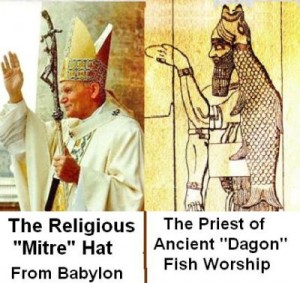
Well I wouldn't say the Sumerians have the oldest civilization all though they are among the oldest,but such practices pre-dates "civilizations" itself and certainly the Sumerians figures highly in this reguard,it is my belief that the gods are not new but they under go changes and transformation over time,one can see in for instance ritual objects used in today's Abrahamic religions that goes back to Sumerian and Kemetic times these then go even futher back to the times when we were still in the caves.
The Pagan Origins of the Church Steeple
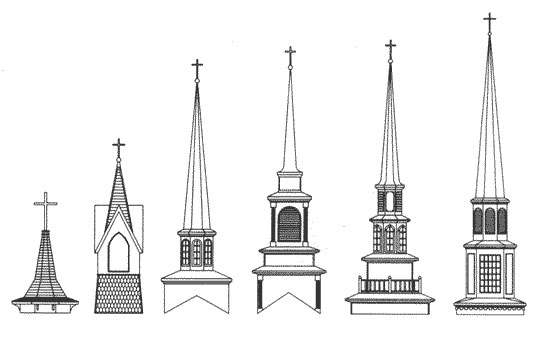
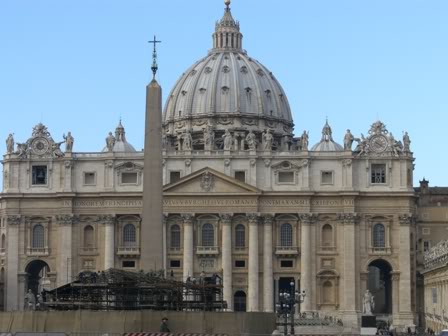

MASSIVE OBELISK ON TOP OF THE AMERICAN BAPTIST THEOLOGICAL SEMINAR IN NASHVILLE, TENNESSEE
The obelisk is the most commonly used and the most blatant occult symbol used throughout the world. In ancient Egypt, the cult of this phallic symbol was associated with the god Osiris, who was cut in 13 pieces by Seth. Isis traveled far and beyond to retrieve all of Osiris’ body parts and was successful, except for one body part, the penis, which was swallowed by a fish. ‘The lost phallus’ is thus representative of male energy, and is almost always placed (as in this case) inside a circle, which represents female genitalia and energy. The obelisk in the middle of a circle represents the sexual act and the union of opposite forces. In our modern world, obelisks are found on nearly all important landmarks, and thus became and symbol of the occult elite’s power.”
leavethecult.com...
It was not until the rise of the Roman Catholic Church that religious philosophies would once again blend in the right mixture to produce “pointy tops” to crown buildings of worship.[3] Neoplatonic philosophy and aesthetics dictated the need for architecture which inspired a sense of awe and worship. Religious architecture had always followed the lead of secular culture, as illustrated by Constantine’s basilicas, which were built to imitate the courthouses of his day. But toward the end of the Byzantine period of architecture, the Popes which followed seemed to draw inspiration from the obelisks of ancient Egypt.[4] As religious architecture began to enter the Romanesque period, points began to appear on the surfaces and corners of every cathedral built in the Holy Roman Empire. This trend would reach its pinnacle in the days of Gothic architecture epitomized by Abbot Suger’s construction of Saint Denis (around 1130-1140, see image 5). Perhaps drawing inspiration from the grandiose statues and towers of ancient Egypt, Gothic architecture sought to express divine direction through exaggerated heights and imposing solidity with the building materials selected. At this time cathedrals typically displayed 100 or more points of different types, some crowned with crosses, others simply sticking upward with bare stone or iron.
thedissidentblog.wordpress.com...
i enjoyed that Spider thank-you for the imput
i just love reading bits of old stuff the more the merrier
now dinners late lol
i just love reading bits of old stuff the more the merrier
now dinners late lol
reply to post by Spider879
When I studied Great Religions of the World in College- Our Teacher had a picture on the wall. Older man with a white flowing beard sitting on a throne with a gold halo around his head. The teacher asked the class who was this man. Over half stated it was God. Our teacher informed us that it was in fact a picture of Zeus.
We learned that the conquering religion absorbs the older religion or others as a way to ensure cooperation. As the Romans did when they conquered territories. Those under Roman protection could still pray to their Gods though later when the Romans became Christian that changed.
As Catholicism grew strength they altered Pagan Deities into Saints such as the Mother Mary was the Goddess Danu (depending on which perspective you believe). Catholicism even took over Solstices and Equinox holidays and Christianized them into Easter, Christmas, ect.
What I have been researching lately is where did the Source- that labeled as a knowing of a deity source - come from. What is the oldest Civilization that categorized Gods/Goddess into the branches known today. Each Diety is in charge of an area such as Diana the Moon Goddess/Huntress, Zeus Lighting and Father. Hades Keeper of the underworld. Who predated them?
Did God create man or did man create Gods/Goddess- and given a strong belief with enough people focused on the same principle- gave them power, life and immortality. The foundation of all magic is that if you strongly believe in a thing; you can the energy of the Source to create its happening or its existence to be true. Could that be the same thing as the Gods/Goddess came about. What makes Yahweh different going along with that theory.
When I studied Great Religions of the World in College- Our Teacher had a picture on the wall. Older man with a white flowing beard sitting on a throne with a gold halo around his head. The teacher asked the class who was this man. Over half stated it was God. Our teacher informed us that it was in fact a picture of Zeus.
We learned that the conquering religion absorbs the older religion or others as a way to ensure cooperation. As the Romans did when they conquered territories. Those under Roman protection could still pray to their Gods though later when the Romans became Christian that changed.
As Catholicism grew strength they altered Pagan Deities into Saints such as the Mother Mary was the Goddess Danu (depending on which perspective you believe). Catholicism even took over Solstices and Equinox holidays and Christianized them into Easter, Christmas, ect.
What I have been researching lately is where did the Source- that labeled as a knowing of a deity source - come from. What is the oldest Civilization that categorized Gods/Goddess into the branches known today. Each Diety is in charge of an area such as Diana the Moon Goddess/Huntress, Zeus Lighting and Father. Hades Keeper of the underworld. Who predated them?
Did God create man or did man create Gods/Goddess- and given a strong belief with enough people focused on the same principle- gave them power, life and immortality. The foundation of all magic is that if you strongly believe in a thing; you can the energy of the Source to create its happening or its existence to be true. Could that be the same thing as the Gods/Goddess came about. What makes Yahweh different going along with that theory.
Originally posted by Beornereed
reply to post by Spider879
When I studied Great Religions of the World in College- Our Teacher had a picture on the wall. Older man with a white flowing beard sitting on a throne with a gold halo around his head. The teacher asked the class who was this man. Over half stated it was God. Our teacher informed us that it was in fact a picture of Zeus.
We learned that the conquering religion absorbs the older religion or others as a way to ensure cooperation. As the Romans did when they conquered territories. Those under Roman protection could still pray to their Gods though later when the Romans became Christian that changed.
As Catholicism grew strength they altered Pagan Deities into Saints such as the Mother Mary was the Goddess Danu (depending on which perspective you believe). Catholicism even took over Solstices and Equinox holidays and Christianized them into Easter, Christmas, ect.
What I have been researching lately is where did the Source- that labeled as a knowing of a deity source - come from. What is the oldest Civilization that categorized Gods/Goddess into the branches known today. Each Diety is in charge of an area such as Diana the Moon Goddess/Huntress, Zeus Lighting and Father. Hades Keeper of the underworld. Who predated them?
Did God create man or did man create Gods/Goddess- and given a strong belief with enough people focused on the same principle- gave them power, life and immortality. The foundation of all magic is that if you strongly believe in a thing; you can the energy of the Source to create its happening or its existence to be true. Could that be the same thing as the Gods/Goddess came about. What makes Yahweh different going along with that theory.
As far as I can tell we have two sources for our main belief system in the West one on the Nile and the other on the Tigris/Euphrates Kemet seemed Henotheistic there are many forms of the same source.
edit on 4-3-2013 by Spider879 because: (no reason given)
reply to post by Spider879
Let's go back long before this, to the real origins of the horned god. Did the greek god Pan (by any other name) have any prehistory roots, via cave paintings, carvings, etc? Pan as an aspect of God is "set in stone", so to speak, and I'm wondering how long ago humans used him or something like him as a frisky frolicking diety. I don't mean the exact name Pan, but how old is the horned god that romps in the forests, attracts the women, and, in years to come, eventually saves the environment. Did prehistoric man in Africa, Europe, Asia, or even the early American tribes, create or carry over a horned god such as "later" identified as Pan?
Wikipedia doesn't seem to have such data on its page if I'm reading it right. The en.wikipedia.org...(god) wikipedia page - click under Pan (god) on the linked page - picks up the Pan story during the Greek god's creation - but is this it's true creation or a revival of a much earlier and stone-age honored diety that later bounced around the Moors and the Greeks and the later pagans. A good thread here, with pics!
Let's go back long before this, to the real origins of the horned god. Did the greek god Pan (by any other name) have any prehistory roots, via cave paintings, carvings, etc? Pan as an aspect of God is "set in stone", so to speak, and I'm wondering how long ago humans used him or something like him as a frisky frolicking diety. I don't mean the exact name Pan, but how old is the horned god that romps in the forests, attracts the women, and, in years to come, eventually saves the environment. Did prehistoric man in Africa, Europe, Asia, or even the early American tribes, create or carry over a horned god such as "later" identified as Pan?
Wikipedia doesn't seem to have such data on its page if I'm reading it right. The en.wikipedia.org...(god) wikipedia page - click under Pan (god) on the linked page - picks up the Pan story during the Greek god's creation - but is this it's true creation or a revival of a much earlier and stone-age honored diety that later bounced around the Moors and the Greeks and the later pagans. A good thread here, with pics!
edit on 4-3-2013 by Aleister because: (no reason given)
reply to post by Aleister
Yes that would be the ithyphallic Bes who mearged with Mendes to get Bacchus,Bes was originally from the Kongo Great lakes area he is also associated with Ptah who is sometimes shown as a dwarf for Bes is in fact a Pygmie or Ba-Twa who are closest to the spirit world,to this day although oppressed they are seen as having intimate connections to the Gods by their Bantu neighbours.
I invite^ you to check out this video series.
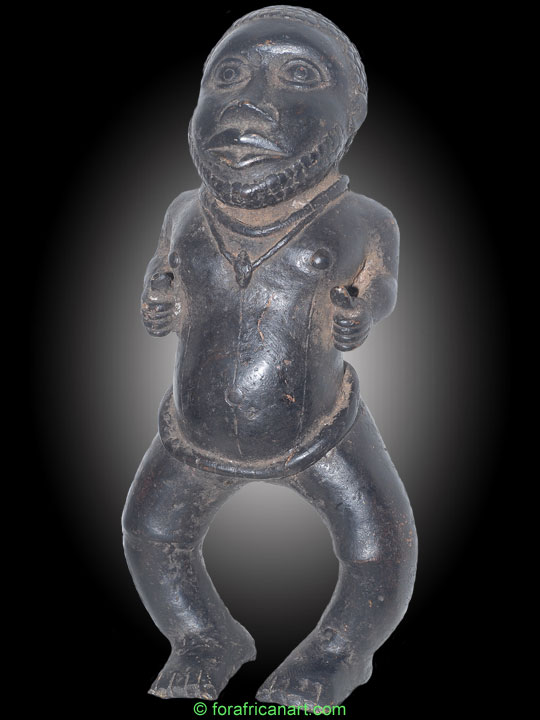
Bes Kongo
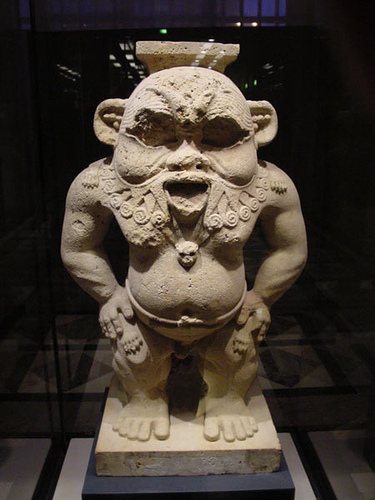
Bes Kemet
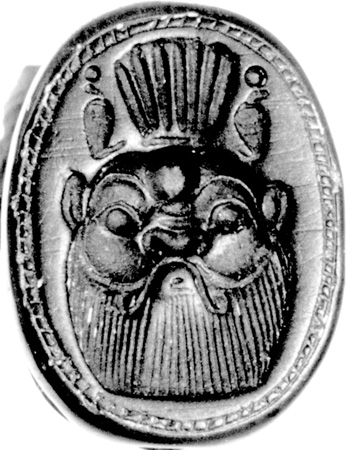
Carthagian Bes
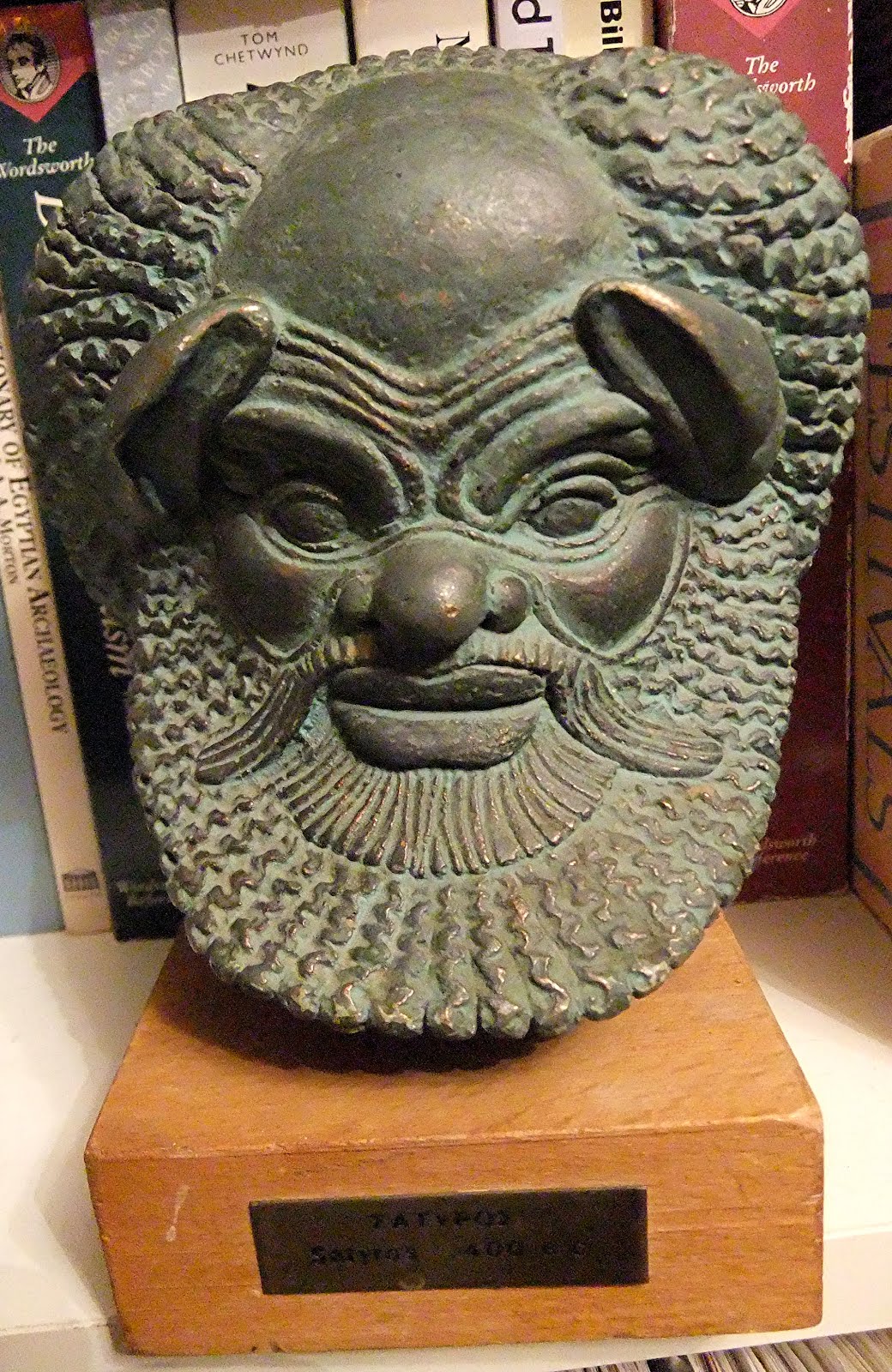
Greek Saytr or Pan aka Bes aka Bacchus
Pepi II inscription from a trade mission to the Great Lakes area one of the nurseries of what was to became Nile Valley civilization
www.abovetopsecret.com...
cdn.preterhuman.net...
Let's go back long before this, to the real origins of the horned god. Did the greek god Pan (by any other name) have any prehistory roots, via cave paintings, carvings, etc? Pan as an aspect of God is "set in stone", so to speak, and I'm wondering how long ago humans used him or something like him as a frisky frolicking diety. I don't mean the exact name Pan, but how old is the horned god that romps in the forests, attracts the women, and, in years to come, eventually saves the environment. Did prehistoric man in Africa, Europe, Asia, or even the early American tribes, create or carry over a horned god such as "later" identified as Pan?
Yes that would be the ithyphallic Bes who mearged with Mendes to get Bacchus,Bes was originally from the Kongo Great lakes area he is also associated with Ptah who is sometimes shown as a dwarf for Bes is in fact a Pygmie or Ba-Twa who are closest to the spirit world,to this day although oppressed they are seen as having intimate connections to the Gods by their Bantu neighbours.
I invite^ you to check out this video series.

Bes Kongo

Bes Kemet

Carthagian Bes

Greek Saytr or Pan aka Bes aka Bacchus
Pepi II inscription from a trade mission to the Great Lakes area one of the nurseries of what was to became Nile Valley civilization
www.abovetopsecret.com...
You have said...that you have brought a pygmy of the god's dances from the land of the horizon-dwellers, like the pygmy whom the god's seal-bearer Bawerded brought from Punt in the time of King Isesi. You have said to my majesty that his like has never been brought by anyone who went to Yam previously...Come north to the residence at once! Hurry and bring with you this pygmy whom you brought from the land of the horizon-dwellers live, hail and healthy, for the dances of the god, to gladden the heart, to delight the heart of King Neferkare who lives forever! When he goes down with you into the ship, get worthy men to be around him on deck, least he fall into the water! When he lies down at night, get worthy men to lie around him in his tent. Inspect ten times at night! My majesty desires to see this pygmy more than the gifts of the mine-land and of Punt! When you arrive at the residence and this pygmy is with you live, hale and healthy, my majesty will do great things for you, more than was done for the god's seal-bearer, in the time of King Isesi.
cdn.preterhuman.net...
edit on 4-3-2013 by Spider879 because: Fixed the Vid.
I don't know if the Pharoahs ever took the drug Iboga but the Ba-Twa which their God Bes came from certainly did if you watch the video siries in the previous post you will find a similar situation as from thousands of yrs ago with Kemet.
An interview with an Ibogaine user.
Native South American priest used something similar called Ayuasca.
edit on 4-3-2013 by Spider879 because: (no reason given)
Interesting how when you trace back the history of the deities they all go back to another source. Such as Yahweh to Zeus to Anu. All were known as
Father. Do you know the very first series of Deities or are the Sumerians the earliest known.
Originally posted by Beornereed
Interesting how when you trace back the history of the deities they all go back to another source. Such as Yahweh to Zeus to Anu. All were known as Father. Do you know the very first series of Deities or are the Sumerians the earliest known.
well as far as I know the Gods/goddess would remotely recognized is found on pottery on the Nile or Mesopotamia,but the oldest uncontested God still in use today goes to the Australians as the great cosmic serpent and Crocodile, at 40000
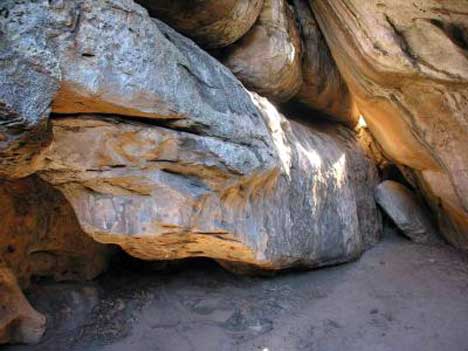
The oldest representation goes to the south Africans at a whooping 70,000 yrs B,C
new topics
-
The Baloney aka BS Detection Kit
Social Issues and Civil Unrest: 4 hours ago -
Suspected Iranian agent working for Pentagon while U.S. coordinated defense of Israel
US Political Madness: 4 hours ago -
How does my computer know
Education and Media: 7 hours ago -
USO 10 miles west of caladesi island, Clearwater beach Florida
Aliens and UFOs: 11 hours ago
top topics
-
USO 10 miles west of caladesi island, Clearwater beach Florida
Aliens and UFOs: 11 hours ago, 8 flags -
Suspected Iranian agent working for Pentagon while U.S. coordinated defense of Israel
US Political Madness: 4 hours ago, 8 flags -
How does my computer know
Education and Media: 7 hours ago, 2 flags -
The Baloney aka BS Detection Kit
Social Issues and Civil Unrest: 4 hours ago, 2 flags
active topics
-
Suspected Iranian agent working for Pentagon while U.S. coordinated defense of Israel
US Political Madness • 8 • : marg6043 -
US and Israel Reportedly Conclude Most Hostages Still Held in Gaza Are Dead
War On Terrorism • 148 • : YourFaceAgain -
Running Through Idiot Protestors Who Block The Road
Rant • 51 • : Terpene -
Candidate TRUMP Now Has Crazy Judge JUAN MERCHAN After Him - The Stormy Daniels Hush-Money Case.
Political Conspiracies • 195 • : Vermilion -
President BIDEN Warned IRAN Not to Attack ISRAEL - Iran Responded with a Military Attack on Israel.
World War Three • 40 • : marg6043 -
It has begun... Iran begins attack on Israel, launches tons of drones towards the country
World War Three • 630 • : marg6043 -
Abortions in first 12 weeks should be legalised in Germany, commission says
Medical Issues & Conspiracies • 11 • : Euronymous2625 -
The Baloney aka BS Detection Kit
Social Issues and Civil Unrest • 5 • : crayzeed -
Mood Music Part VI
Music • 3040 • : TheWoker -
Spy Music
Music • 41 • : underpass61
8
